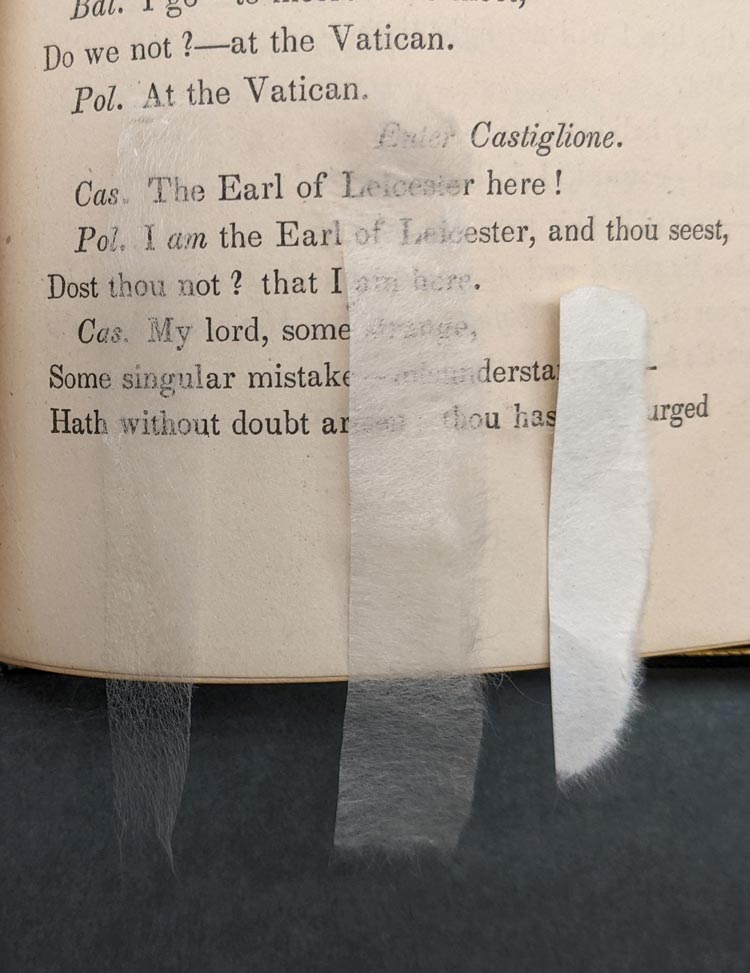
Conservation of The Raven
Thanks to a generous gift from alumnus Daniel J. Smith (BA economics ’85) and Linda Way-Smith, we were able to conserve our gorgeously bound first edition of Edgar Allan Poe’s The Raven.



Before conservation, the water damage that the volume had suffered had severely warped the cover boards and glued the endpapers to the inner boards. This made it impossible to open the volume without damaging the book, and as a result, we could not make this volume accessible to patrons.
The conservation of this volume required carefully removing the cover from the text-block pages so that the leather binding could be treated separately from the paper pages. The cover was humidified and pressed between felts for several days. This helped reduce the warpage of the boards but could not flatten them perfectly. Since the boards were cut short grain, they are especially prone to warping in high humidity conditions, so we have been sure to order a custom-sized archival box for the volume to be housed in, now that it is repaired.
While the cover dried under pressure, the text-block was completely unbound into loose folios to be humidified and flattened separately. This had to be done especially carefully due to a hand-painted watercolor frontispiece, which could have been blurred and damaged by humidification.

Once the pages were flattened, the endpapers were mended with a sympathetically colored Kozo tissue to repair the damage they suffered being glued to the pastedowns.

Kozo tissue is one of many Asian repair papers frequently used in book and paper conservation. These papers are so long-fibered that they are extremely strong even when thin enough to read through, so the lighter weight varieties can even be used to repair pages with text. We were lucky enough that The Raven‘s pages were not damaged into the text, but in the following image, you can see examples of some of the varying weights of Asian repair papers that we use in conservation.
After the mending was complete, the text-block was fully re-sewn and carefully returned to the flattened binding. The binding itself required repair to the hinges, which was also done with Kozo tissue, this time of a much heavier weight. Kozo tissue can be sealed and then toned with light-stable acrylic paints to match the color of the materials it is repairing. The color match is only as good as the conservator doing the work, but I must say the conservator did a fantastic job, as you can see!


Once the structural repairs to the leather binding had been done, they finished the conservation off with a few aesthetic touches. The conservator sewed new endbands onto the volume to match the style of the original endbands, and they added a bit of decorative gold to the endcaps as well.
Short of the volume never having been damaged in the first place, we couldn’t be happier with how the conservation project turned out. We are especially thrilled that we can now show patrons the beautiful doublures created by Belgian book-binder De Samblanx-Weckesser.
If you would like to see The Raven in person, or any of the other beautifully bound books in our Rare Book Collections, please contact Rare Book Collections Curator Cassie Brand.


If you too would like to help preserve our collections, please take a look at our conservation wish list and consider donating to our Legacy of Books preservation fund.
